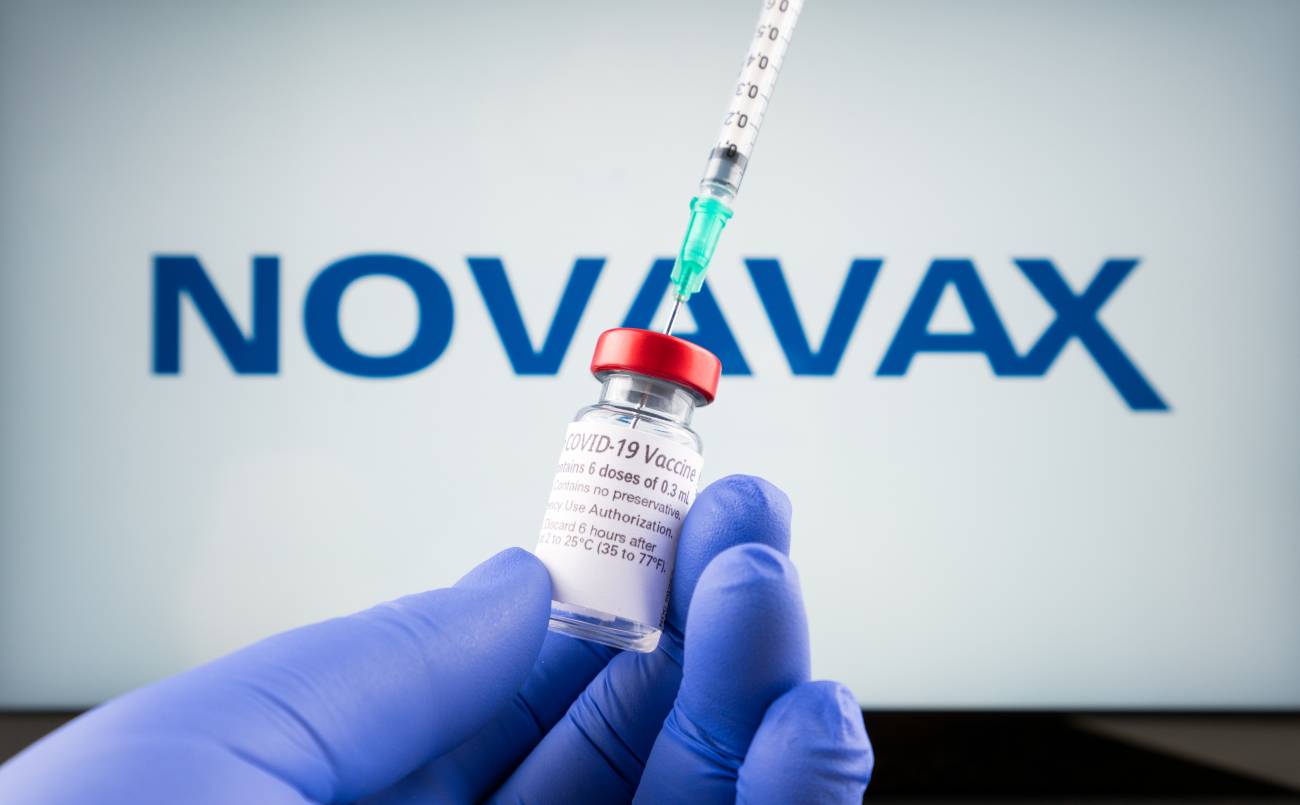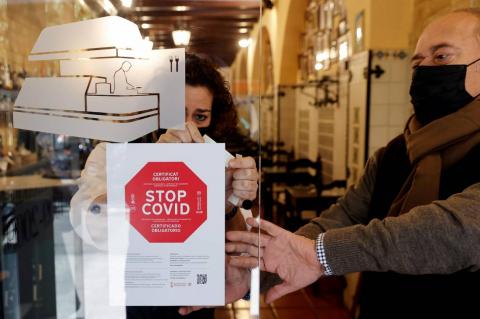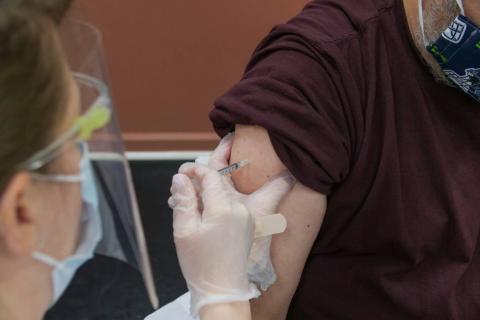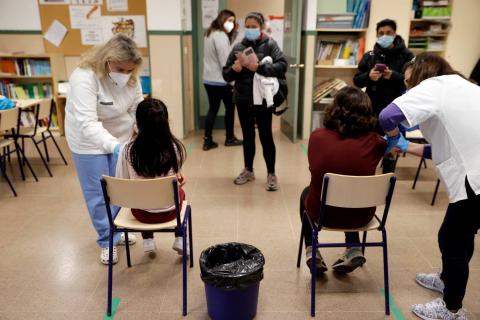Nuvaxovid is the first of a new generation of anticovid vaccines based on a different technology than the four previously available vaccines. It belongs to the so-called protein vaccines, because it contains the SARS-CoV-2 spicule protein. One of its main advantages is that it can be stored in conventional refrigerators, which facilitates its distribution in countries with fewer resources.
Nuvaxovid will soon be available in Spain to those who were contraindicated for the available vaccines, or who have received incomplete vaccination.
According to the latest update of the Spanish vaccination strategy, published on 8 February, Nuvaxovid will soon begin to be administered in Spain to those who had contraindications to available vaccines, or who have received incomplete vaccination "due to severe adverse reactions to mRNA vaccines, a history of allergy to any of their components and other medical indications that recommend avoiding vaccination with these vaccines or other circumstances".
The full schedule with Nuvaxovid is two doses about three weeks apart.
European approval
The European Commission approved its use on 20 December, shortly after the European Medicines Agency (EMA) recommended its use: "Nuvaxovid offers a high level of protection against covid-19, a crucial need in the current pandemic. (...) The Agency has decided that the benefits of Nuvaxovid outweigh its risks".
The authorisation is "conditional", which implies that "further information on the vaccine is awaited, which the company will be obliged to provide", says the EMA.
The Commission explains that conditional authorisation is based on "less complete data" than those required for a normal authorisation. It is done "if the benefit of the immediate availability of a medicinal product to patients clearly outweighs the risk related to the fact that not all data are yet available". But it "also ensures that this covid-19 vaccine meets EU standards".
Why is Nuvaxovid different?
The four vaccines available so far work by introducing the genetic instructions for producing virus proteins into human cells. The vaccinated person's cells then display viral proteins on their membrane, so that their immune system learns to recognise them quickly in the event of infection. In contrast, the Novavax vaccine directly inoculates the S protein of the virus, together with another compound obtained from a tree (Quillaja saponaria) that stimulates the immune response.
The Novavax vaccine directly inoculates the S protein of the virus, together with another compound obtained from a tree that stimulates the immune response.
The proteins are arranged in nanoparticles, spheres about 30 millionths of a millimetre in diameter. Each nanoparticle has around 15 S-proteins on the outside, forming a structure similar to the real virus.
A well-established technology
Although Novaxovid is the first protein vaccine against covid-19, the technology is not new. It was first used in the 1980s in the hepatitis B vaccine, and later in human papillomavirus (HPV), pertussis and influenza, among others.
Manufacture in moth cells in Spain
The vaccine protein is made in moth cells, a well-established technique that has been used since 2000. The gene for the protein is first inserted into a baculovirus, a type of virus that infects insects, and moths are infected with it; the infected moth cells, suitably cultured, then become factories of the desired protein.
Once harvested, the proteins naturally self-assemble, Novavax explains in a video, into nanoparticles that simulate the real coronavirus.
The industrial production of the protein S for the Novavax vaccine for the entire European Union is carried out by the biopharmaceutical group Zendal through its subsidiary Biofabri, located in O Porriño (Pontevedra).
Who financed it
Novavax is a small US company for its sector that has been developing vaccines for several decades; although when the pandemic broke out none of them had been approved, experience with the SARS and MERS coronaviruses prompted the company to develop a vaccine against covid.
In 2020 Novavax received 350 million euros from the international organisation CEPI, the Coalition for Epidemic Preparedness Innovations, which funds vaccine research against emerging infectious diseases with public and private donations.
The company also has $1.6 billion in US public funding, and has advance purchase agreements with Europe and other countries.
Delivery commitments in Europe
In August 2021, the European Commission announced the signing of advance procurement contracts with Novavax. In the same month, Spain approved the advance procurement of 2,284,085 doses, as part of the allocation of the first 20 million doses committed to the European Union. At the time, deliveries were planned "for the end of 2021 and the beginning of 2022, at a rate of 679,972 doses in November 2021, 810,850 in December and 793,263 in January 2022," the Spanish health ministry said at the time.
It has been approved after analysing the results of two double-blind clinical trials involving more than 45,000 people.
On trials and efficacy
As reported by the European Medicines Agency (EMA) and the Spanish Medicines Agency (AEMPS), Novavax's vaccine has been approved after analysing the results of two double-blind clinical trials - in which participants and healthcare workers do not know whether the vaccine or a placebo is inoculated - involving more than 45,000 people.
The first study, in Mexico and the US, showed 90.4% efficacy; the second, in the UK, showed 89.7% efficacy. "Taken together, the two trials show an efficacy of around 90%," the AEMPS reports.
The AEMPS notes, however, that "when the studies were ongoing, the strains circulating were the original SARS-CoV-2 strain and some of the variants of concern, such as alpha and beta. Currently, there is limited data on the efficacy of Nuvaxovid against other variants of concern, including omicron".
Mild adverse reactions
Adverse reactions in these clinical trials were "generally mild to moderate and disappeared within a couple of days after vaccination," the AEMPS notes. The most common were tenderness or pain at the injection site, tiredness, muscle pain, headache, malaise, joint pain and nausea or vomiting.
As with other vaccines, the national and international pharmacovigilance system will continue to collect data on these reactions when the vaccine is first used.
What is not yet known
There are questions that cannot yet be answered, such as how long the immunity generated by the vaccine will last or how much Nuvaxovid reduces human-to-human transmission of the virus. "It is not yet known to what extent vaccinated people could carry the virus and spread it," the EMA says.
On whether those who have already passed covid-19 can be vaccinated with Nuvaxovid, the EMA found no "additional adverse effects" in these cases. It admits, however, that "the trial did not provide sufficient data to determine the efficacy of Nuvaxovid in people who have already had covid-19.
Nuvavaxovid in people allergic to other vaccines
The Spanish Society of Allergology and Clinical Immunology (SEAIC) has drawn attention to the fact that Nuvovaxid contains POLYSORBATE 80, also present in the AstraZeneca and Janssen vaccines, among its excipients. The SEAIC recommends "that Novavax's new SARS-CoV-2 vaccine should not be administered without prior allergological evaluation by a qualified allergist in those individuals who have had systemic allergic reactions, especially if severe, with any other SARS-CoV-2 vaccine".
However, the Health Department has already taken into account in this Technical Guideline that the Novavax vaccine also contains components that have caused allergic reactions.
The company will contribute 1.1 billion doses to COVAX, the instrument created to achieve access to vaccination for disadvantaged countries.
Novavax and access to vaccines for poor countries
The company, which has received significant funding from CEPI, will contribute 1.1 billion doses to COVAX, the instrument of the WHO, CEPI, the GAVI alliance and other international organisations created to achieve access to vaccination for disadvantaged countries. Thus, given Novavax's weight in COVAX, the company's delays in producing its vaccine would have made it difficult for COVAX to reach its targets.
But Novavax has had the green light from the WHO since 17 December to begin distribution. This is, explains the WHO, an "approval for use in emergencies (...) which evaluates the quality, safety and efficacy of covid-19 vaccines and is a prerequisite for the supply of vaccines through COVAX".
The vaccine to be distributed by COVAX is the Novavax vaccine produced under licence by the Serum Institute of India, under the name CovovaxTM. According to the WHO, it will give "a much-needed boost to ongoing efforts to vaccinate more people in low-income countries".
CEPI Director Richard Hatchett also welcomed the WHO approval: "NVX-CoV2373 is safe, effective against multiple variants, and can be stored in a standard refrigerator, so it can be easily deployed without the costly and burdensome cold chain requirements. With more than 1 billion doses available for COVAX, I expect this CEPI-supported vaccine to make a significant contribution to controlling the pandemic on a global scale".




